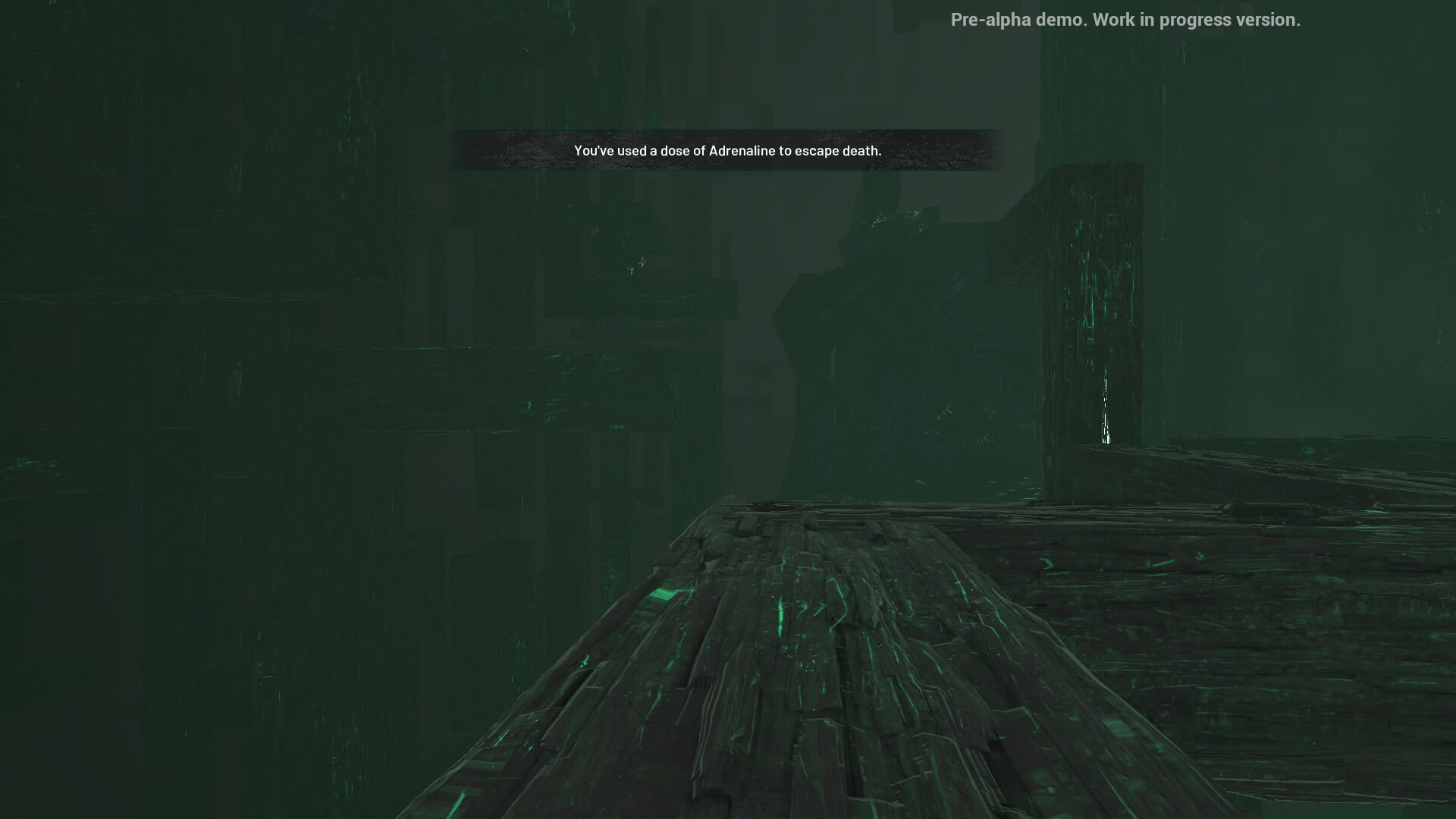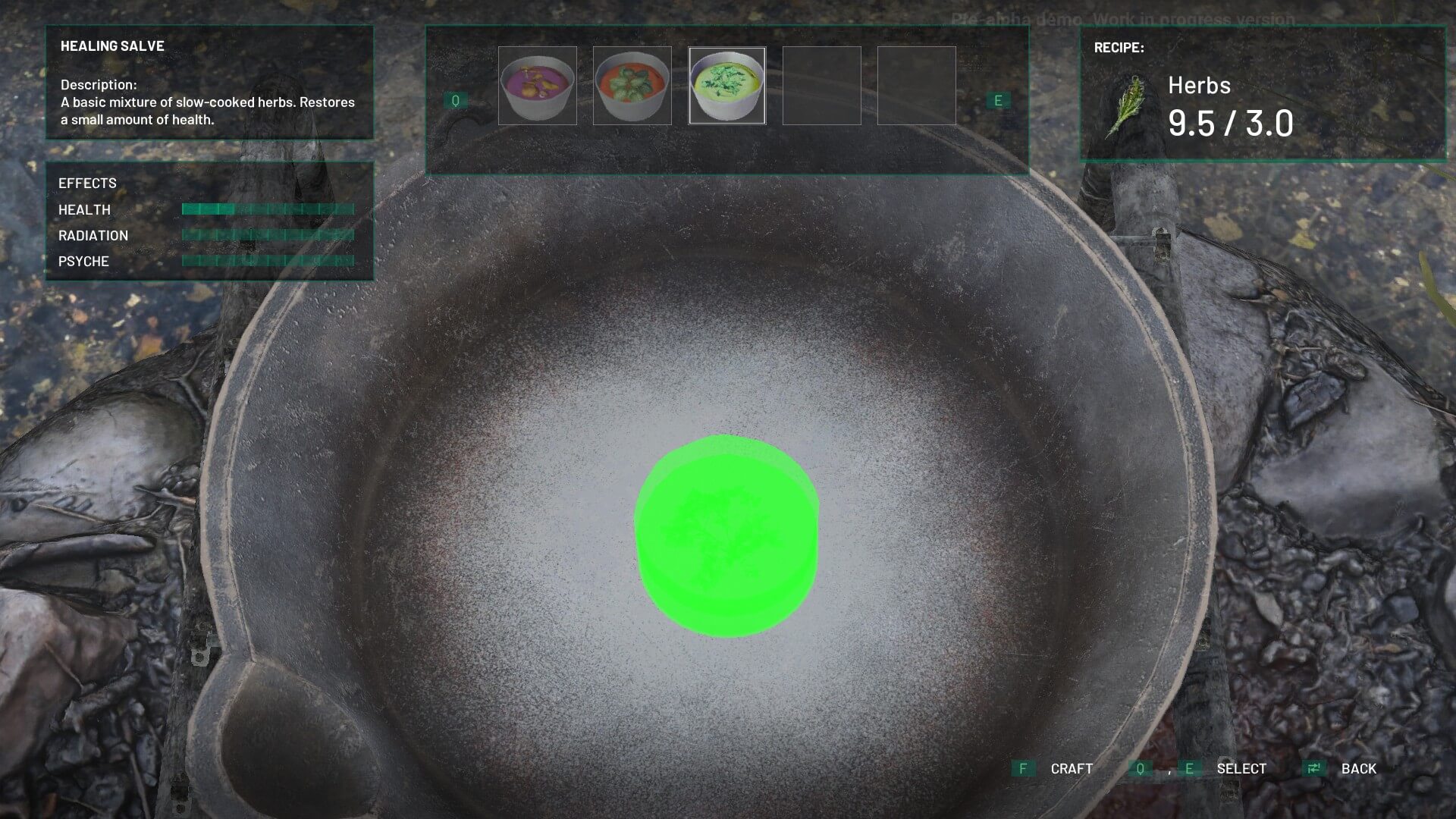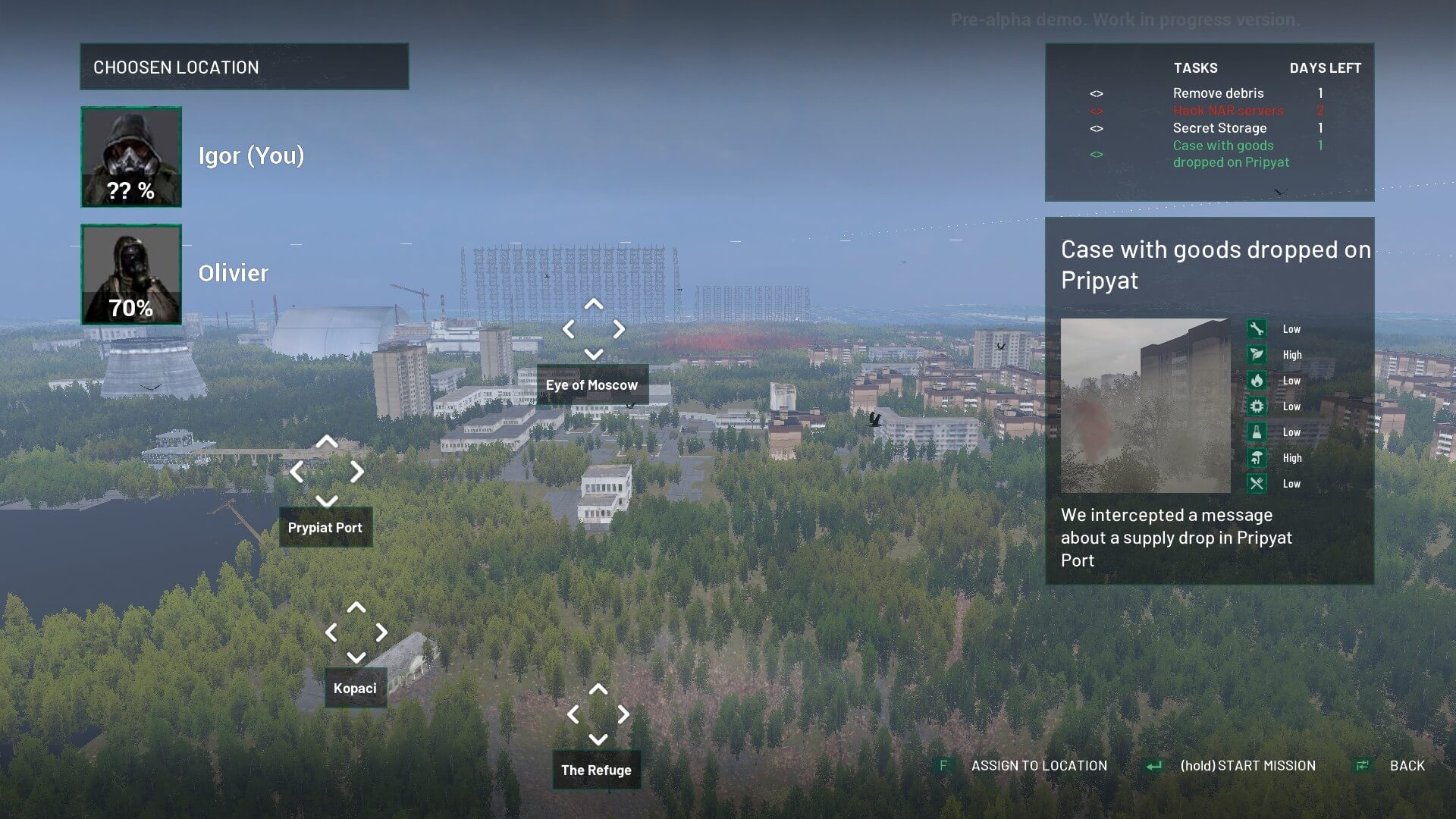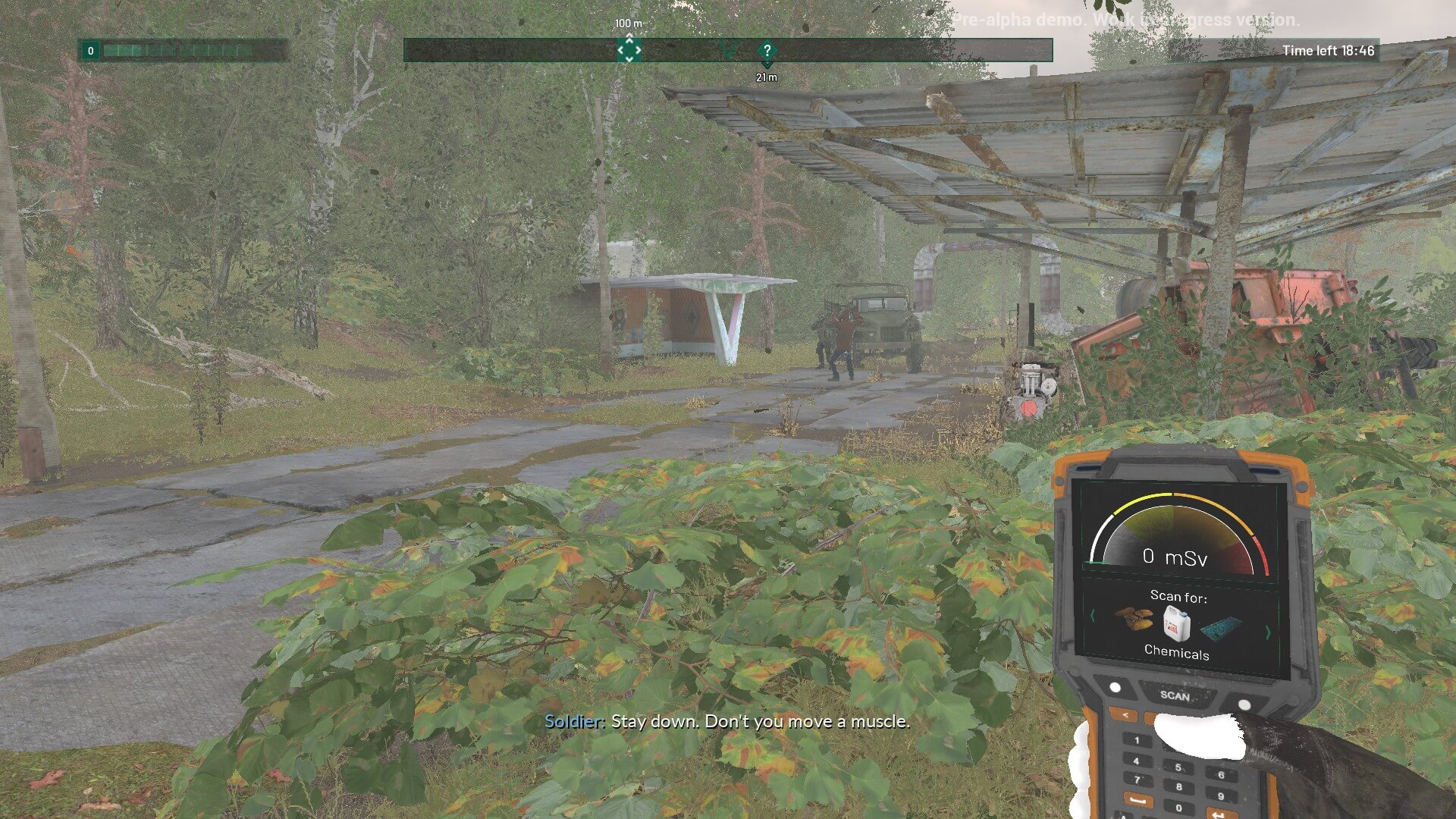In Chernobylite, radiation isn’t all you need to worry about
Already over 80% funded since it appeared on Kickstarter in mid April, Chernobylite is a non-linear, first-person shooter. With a keen focus on survival, though, it steers you away from the firing line, placing emphasis instead on stealth and caution. We were able to take a look at an early alpha build for a glimpse of the gameplay and the strange horrors it will contain.
The beginning of the demo, preceded by a short video introduction, introduced us to one of Chernobylite’s key features: the vast geometric space of an alternate reality, filled with blocks of an unusual green material. This is the space we could use to navigate the exclusion zone quickly, using it as a shortcut to hop between locations or out of danger. It also seems to be key to the horrors we encountered later on, and likely plays a larger part in the story than the demo could give credit for.
Using this shortcut appears to be a new endeavour — one which your character, a physicist, has probably come up with, likely as part of his attempts to investigate his wife’s disappearance. While this does serve as his reason for being in the zone, even in the demo we had to make decisions between furthering the search for Tatanya or helping a fellow stalker. Considering you can have multiple companions and meet others out and about in the zone, we imagine the conflict between different goals and opinions will play a strong part in the story to come.

Chernobylite doesn’t claim to be open world, but the maps you can access via the alternate reality feel large and there’s plenty to do in them. While you may go to a location for one mission, each time you go you could stumble open different events and people, from stalkers with items to trade to military-guarded supply caches. With the help of a handy scanning tool, you can locate and collect items such as herbs, fuel and components in the landscape, which are useful for crafting medicines and furniture. You can even make up some healing items on the go, if you come across a campfire.
The landscape Chernobylite provides to roam is interesting to explore when time allows, having been laser-scanned from the area surrounding Chernobyl itself. In fact, this is the main goal of the Kickstarter — not to fund the game entirely, which has already been self-funded, but to fund the inclusion of more scanned areas for people to explore.

Eventually, though, you come back to your base, where you can make use of all you’ve collected to craft and to upgrade the building. The nature of this will be quite familiar to anyone who’s played Fallout 4, as the base-building interface seems quite similar. The upgrades you build will have an impact on the lives of your companions, rather than simply being aesthetic. You can grow herbs, provide healing spaces for injured companions and, of course, distill alcohol — among other things.
It’s from this base that you can send companions (and yourself) out on missions every day. If we stick to drawing parallels then it’s a bit like in This War of Mine, where you have a selection of locations and potential rewards to choose from. It seems that you can only assign one person per location, so you can’t bring a companion along with you on missions, but that means they’ll be useful gathering resources elsewhere. Of course, if they’re in poor condition, they’re more likely to fail, so when everyone’s returned for the day and you get the option to allocate rations, it’s time to be prudent with what you’re dishing out.

We got to play through the mission that Igor, the main character, was assigned to, loading him into the level we’d selected via the alternate reality. In the demo, these were all story-related missions. We teleported into the overgrowth of the exclusion zone with a specific objective alongside the map’s usual discoverable features and were able to return to the same objectives the next day when they had undergone a massive change. If the story continues in the vein the demo left off (i.e. just where it began to get spooky), we expect it will be an intriguing set of events to get to grips with. The dialogue (Russian, captioned in English for us) can sometimes feel a little off, but the characters’ personalities are distinct and we could still understand what was going on.
Even healing won’t do you much good if you’re irradiated, so to avoid wasting anti-radiation medicine (to save for those times when exposure is unavoidable), your time in the exclusion zone must be spent carefully choosing your path between contaminated areas and enemy patrols. The scarcity of medication forces you to slow down and think about what you’re doing, and we felt that the stealth aspects of Chernobylite had a good edge of tension to them.

For a start, the stealth interface is quite intuitive, with a series of yellow arcs appearing in the appropriate direction if someone begins to notice you. That’s usually enough of a warning to slip back around the corner or into a bush. In the demo, enemy patrols seemed well placed — thorough enough to provide a challenge, but with a gap in the pattern that wasn’t too difficult to pick out. Sneaking around is certainly preferable to open combat, as the military have all the equipment you don’t and bullets from them tend to be quite fatal.
Considering the main development is already funded, Chernobylite looks like one of Kickstarter’s safe bets, especially coming from a team with several other titles already under their belt. If you like the idea of exploring Chernobyl and its eerie alternate reality, you can back the Kickstarter now for a chance to get involved and playing before it debuts on PC (planned for early access in November). Other platforms may be considered at a later date.
Chernobylite will be available on PC and consoles later this year.
Comments are closed.